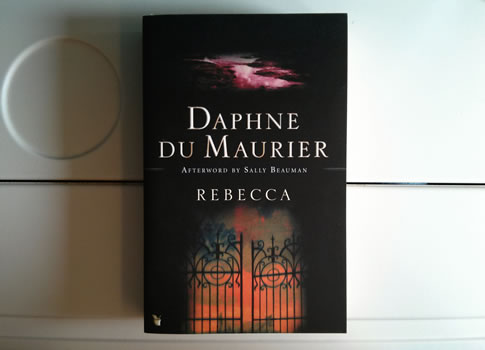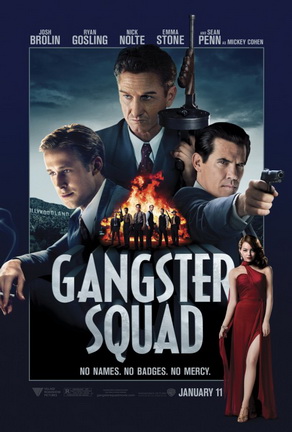
Very recently, I have imported a new Kindle from Amazon. I looked through the Kindle eBooks on sales (I always love a good discount be it as video games via Steam or books). I saw Neon Angel selling at a very reasonable price. Somehow, I have a feeling that this is going to be a good book. So I bought it online in a heartbeat.
Of course it is a good book. I have read it three years ago. A library copy it was. I should have checked my website first before buying any books. Since I have already started rereading it, why not finish the book and see how I feel about it without reading what I wrote three years ago? Our perception is often affected by our maturity and experiences. Would I read this any differently?
You may have watched the movie The Runaways. If you haven’t, here is a quick introduction.
The Runaways was an American all-girl rock band formed in the 70’s. In 1975, Cherie Curries was recruited into the band at the age of 15 as the lead vocalist. While Cherie’s involvement with The Runaways lasted only 2 years, it would appear that she has played an important role in the band’s breakthrough and success. Upon Cherie’s departure, guitarist Joan Jett continued to be the driving force behind the band, together with Sandy West the drummer and Lita Ford the lead guitarist. But by 1979, the band was officially dissolved. All four core members continued their solo careers with Sandy died of cancer in 2005.
Neon Angel is a self-biography written by Cherie Currie. Like most autobiographies, it is hard to tell facts from fictions. However, the emotion as described in the book appears to be genuine. There is no bar held on the high’s and low’s that Cherie has experienced in her two years with The Runaways and the decade thereafter, dealing with the aftermath of stardom.
Raped at the age of 15 by her twin sister’s ex-boyfriend, Cherie was acted as an outcast in school, brought up in a dysfunctional family with her beloved daddy moving to another state, and later, her mother remarried and migrated to Indonesia. Just imagine taking all these in as a 15 years old. It would not have been easy. Back in the 70’s – in the era of sex, drug, and rock & roll – David Bowie was Cherie’s idol. His music was her salvation. There was so much angst inside so much so that she was the perfect fit for a all-girl rock band as the embodiment of rage and rebellion. She was the Cherie Bomb, the sex symbol.
The drama escalated after Cherie has joined the band. There was constantly in-fighting within the band. The tension between Cherie and her twin sister Marie was getting higher and higher. Their alcoholic father did not help the situation. There were early signs of drug use and substance abused. And then another rape, which was much brutal than the previous one. It seems to me that throughout her 2 years career with The Runaways and the few years after, Cherie has suffered much as a teenager. Here are some excerpts from the book.
Something turned off inside of me that day. Something inside of me snapped, and I stopped caring. I never wanted to feel like that again, and so I began to learn how to shove those feeling deep, deep down inside of myself to a place where they could not hurt me anymore. ~ After Cherie’s mother left the country refused to turn around and say goodbye. Cherie was pinned down by a guard in the airport trying to cross the gate and catch up with her mother for one last time.
Last night I’d discovered what it felt like to be a rock star. This morning I knew what it felt like to be a whore. ~ Cherie’s band manager pimped her to a famous teenage idol for sex after her first big concert so as to generate publicity. She was having a period that night.
Maybe [the doctor] was trying to be kind. Maybe he didn’t want me to know [the sex of the unborn baby]. I knew for certain that a part of me was gone along with my unborn child. I’d lost some vital part of myself in that hospital, and I felt instinctively that I would never get it back. ~ This was after her abortion. She was three months into her pregnancy while recording her album without even knowing it.
Funny, isn’t it? After all the things that went on in the band, one of my strongest memories was such a small, quiet moment. ~ The band was full of internal drama. In one rare moment, lead guitarist Lita Ford complemented Cherie’s vocal performance during a recording session.
This nightmare went on for six hours. I can’t even begin to explain what I went through. It’s hard to tell another person some of the things that man did to me. What I will say is that the terror, the horror, and the humiliation that he inflicted upon me were even worse than what I imagine hell to be like. He hurt me with his fists, and with his body. he did it again, and again, and again. He thought nothing of hurting me. Every time I screamed, and I cried, and I begged for mercy, and I bled or I passed out, he seemed to grow stronger, more hateful, more crazed by the lust and the sadism that fueled him. As the night dragged on and my hellish ordeal continued into the breaking dawn, I came to the realization that this man was going to murder me as soon as he was finished torturing me. ~ Cherie was kidnapped and brutally assaulted and raped by a man for six hours. Eventually, the rapist was caught, trialed, and sentenced for one year in jail.
While most of the external events were out of Cherie’s control, the biggest demon turns out to be the one living within her – drug and alcohol abuse. It has slowly destroyed her, destroyed everything that she has. Majority of the book is a tragic recollection of a once upon a time rock & roll star and the price she has paid to get there.
Neon Angel is not without a moment of triumph. Eventually, through persistence, Cherie Currie has emerged clean from drug. She has constantly reinvent herself from a rock star to an actress, drug counselor for addicted teens and as a personal fitness trainer, and now a chainsaw craving artist who has her art gallery. Looking back, would she want to change a thing? This is answered in her afterword written years after the book was published.
Looking back on my life since that fateful day with my niece Cristina, I really see how truly blessed I am. Many years have passed, we have orbited the sun more than 7,500 times and I have seen such extraordinary things, and had so many profound experiences that I could easily fill the pages of another book. In the years since the Runaways I have lost some of my dearest friends, and I have reinvented myself time and time again. But through it all, the wonderment and personal triumph that emerges from the emotional depths I have experienced leave me knowing I wouldn’t have changed a thing.
* * * * *
Now that you have read the book summary written in 2013, you may wish to click here to read the one that was written in 2010.








